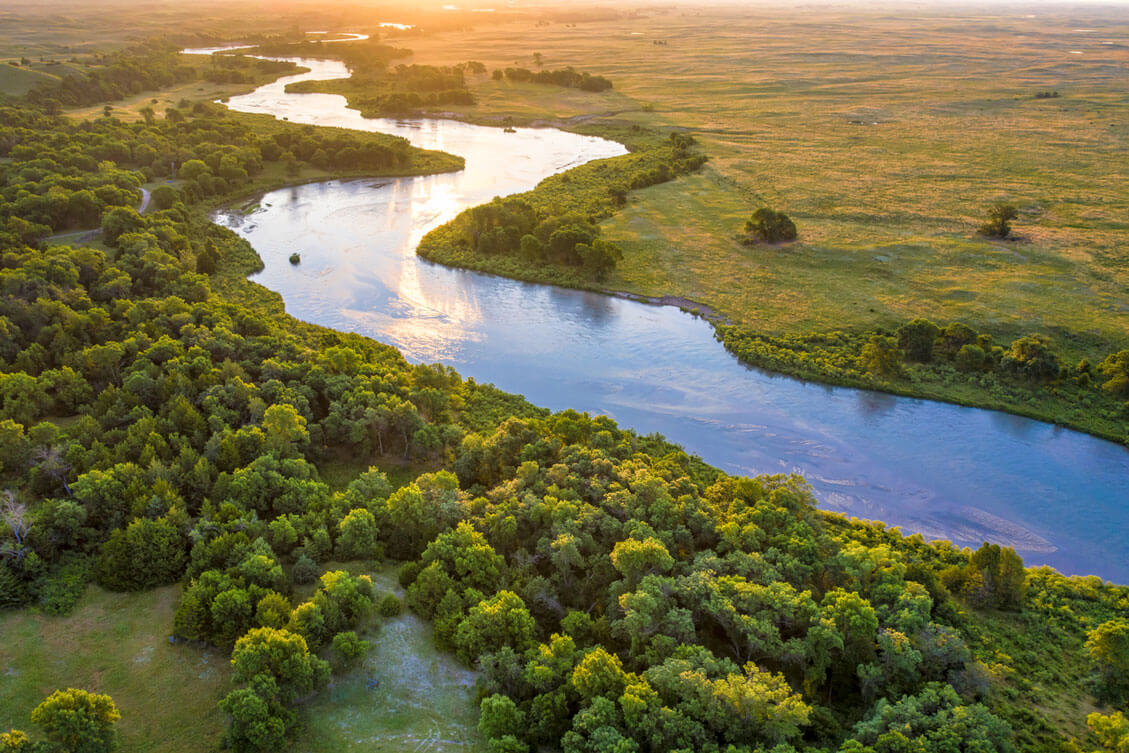1/1 Oops. Incorrect.
0%
0pts Earned
0/1correct
20/20
What mischief are Japan’s Kamikiri known for getting up to?
Japanese folklore tells of Kamikiri, spirits which are notorious for cutting the hair of unsuspecting victims. Targeting mostly young women, the Kamikiri strike at night and lurk in dark alleys, bathrooms, and bedrooms. While it doesn’t sound all that traumatic today, hair in Edo-era Japan was a status symbol, so snipping it might have damaged a person’s reputation.
Source: Brigham Young UniversityBreaking pots
21%
Knocking things over
56%
Uprooting plants
11%
Cutting hair
12%
19/20
Jinni is the Arabic name for which mythical creature?
Jinni is translated from Arabic as “genie.” These are powerful spirits from Islamic (and pre-Islamic) folklore. As seen in the Disney film “Aladdin,” the magic of jinn can be used to human advantage, both for good and evil. However, jinn (the plural of jinni) tend to be invisible to the human eye, so finding one to do your bidding may prove difficult.
Source: BritannicaDragon
20%
Genie
65%
Ghosts
8%
Witches
7%
18/20
What is a caladrius?
The caladrius is a common character in European medieval manuscripts. White like a swan and with great wings, the bird is often depicted flying to the beds of sick people, where it would predict their fate. If it turned away, the person would succumb to illness. If the caladrius kept its gaze on them, they would make a full recovery, and the caladrius would then fly away and take the illness with it.
Source: British LibraryA type of bird
23%
A wizard
21%
A three-headed dog
45%
A big cat
11%
17/20
In China, when is the qilin said to appear?
The qilin — a gentle unicorn from Chinese mythology — usually makes an appearance when an illustrious ruler or sage is about to arrive (or, in some cases, pass away). According to ancient texts, the first qilin was said to appear around 3000 BCE. It notably appeared again in the sixth century BCE to the pregnant mother of Confucius, when it spat out a jade tablet that told her of the future greatness of her unborn child.
Source: BritannicaAt night
16%
When the seasons change
24%
Before the arrival of a ruler
19%
At harvest festivals
41%
16/20
The magical giant Antero Vipunen is found where?
According to the Finnish epic poem “Kalevala,” Antero Vipunen is a magical giant who lives in the land of the dead and has the power to bestow charms upon those who seek him. However, he's usually asleep, so when the folklore hero Vainamoinen needed the giant's help, Vainamoinen had the dangerous task of climbing inside Antero Vipunen’s mouth to wake him up.
Source: Occult WorldHungary
40%
Italy
13%
France
4%
Finland
43%
15/20
The Melanesian Abaia is a magical kind of what?
In the Melanesia region of southwest Oceania — particularly Solomon, Fiji, and Vanuatu — local legends say a giant eel called the Abaia lives at the bottom of freshwater lakes. It's usually harmless to humans, but the Abaia is very protective of the smaller creatures who share its living space. The giant eel can allegedly cause tsunamis and sink ships, but you'll be safe if you don't touch the surrounding fish.
Source: Mythical Creatures GuideSnake
29%
Eel
24%
Eagle
34%
Ape
14%
14/20
What Hindu mythical character is Indonesia’s national airline named for?
The national airline of Indonesia, Garuda Indonesia Airlines, is named after Garuda — a bird-like demigod who transports Lord Vishnu in Hindu stories. When the airline was founded in 1949 and Indonesian politicians were discussing what to call it, the president at the time, Sukarno, recited a poem that mentioned Garuda "spread its wings high above the islands." The aviation-appropriate name was ultimately chosen.
Source: BritannicaKala
33%
World Turtle
9%
Garuda
37%
Naga
21%
13/20
Pixies originated from which culture's folklore?
Small and pretty yet mischievous and skittish, pixies come from Cornish folklore, from the Cornwall region of the United Kingdom. Pixies dress in green robes, and their favorite hobby is dancing to the croaks of frogs and crickets, as well as leading unwitting travelers and young women astray. They also like to blow out candles and make a nuisance around the house, so next time something goes wrong at home, pixies might be to blame.
Source: BritannicaShinto
7%
Cornish
75%
Spanish
9%
Maltese
9%
12/20
The Greek hero Bellerophon rode which mythical creature?
Many mythical creatures have the power of flight, but perhaps most famous of all is Pegasus, a winged white horse. The rider of Pegasus was Bellerophon, who captured him with a magic harness. However, when he attempted to ride to heaven with Pegasus, Bellerophon was killed or injured, while the mystical creature became a gorgeous constellation.
Source: BritannicaHippogriff
12%
Phoenix
17%
Pegasus
67%
Pterodactyl
4%
11/20
What could the Persian manticore allegedly shoot from its tail?
The medieval literature of Persia describes a curious creature called a manticore, which shoots poisonous darts out of its scorpion-like tail. It also has a lion’s body and a man’s head, adding to the zoological mix. The darts could kill most creatures, allowing the manticore to feed on whatever wished — except elephants, which are the fearsome manticore’s one weakness.
Source: World History EncyclopediaPoisoned darts
19%
Fire
25%
Arrows
9%
Lightning bolts
47%
10/20
What is Scotland’s national animal?
Many animals on national emblems are unusual — think lions, dragons, and even porcupines — but Scotland’s is particularly quirky. A white unicorn, which frequently symbolizes purity, is emblazoned across buildings, flags, and official documents in Scotland. You’ll even see it on the royal family’s Coat of Arms, where it stands opposite the lion of England.
Source: National Museums ScotlandBadger
13%
Scottish wildcat
18%
The Loch Ness Monster
18%
Unicorn
51%
9/20
South Africa’s Grootslang is a fusion of which two creatures?
As half-beings go, the Grootslang is quite intimidating. The water creature said to inhabit the lakes and caves of South Africa has the body of an elephant and the tail of a vicious serpent. Legends say it has the power to destroy the world, so to prevent this, the gods banished it to a cave to guard a stash of diamonds.
Source: Paranormal CatalogElephant and snake
32%
Cow and dragon
16%
Tree and lizard
17%
Eagle and horse
35%
8/20
Icelandic children get socks at Christmas to protect them from what?
Cats aren’t always cute and cuddly — in Iceland, people say that children who don’t get new socks at Christmas will be eaten by the Yule Cat, a giant feline predator who stalks the streets on Christmas Eve. But kids don’t just get given the socks; they have to earn them throughout the year with good behavior.
Source: Smithsonian MagazineThe Yule Cat
15%
The Christmas Troll
76%
Giants
6%
The Festive Falcon
2%
7/20
Which city is the Golem famously said to protect?
The Golem is a creature of Jewish folklore that was molded out of clay by a rabbi, then tasked with protecting the streets of Prague’s former Jewish ghetto. It dutifully did so, until one day the rabbi forgot to send it to rest for the Sabbath, so the Golem went raging through the streets. It was swiftly destroyed by its creator, but lives on in Prague’s oral traditions.
Source: Culture TripParis, France
10%
Berlin, Germany
12%
Lisbon, Portugal
13%
Prague, Czechia
64%
6/20
In which Greek landmark was the Minotaur said to live?
Half-human and half-bull, the Minotaur was a frightening creature of ancient Greek legend said to inhabit a labyrinth below the palace of King Minos in Crete. As the center of Minoan civilization during the Bronze Age, the palace of Knossos was the setting for the Minotaur’s dark home. The legend could have stemmed from the palace’s maze-like design or the roars from ancient earthquakes, as the palace stands on an earthquake hotspot.
Source: Culture TripThe Parthenon, Athens
23%
The White Tower, Thessaloniki
13%
Palace of Knossos, Crete
50%
Rhodes Castle, Rhodes
15%
5/20
In which mountain range is the yeti said to roam?
Otherwise known as the “Abominable Snowman,” the yeti is a white Bigfoot-type creature that allegedly roams the Himalayas between Nepal and Tibet. The elusive creature is said to grow as tall as 20 feet, and its footprints are often “spotted” in the snow. One monastery in Nepal even claims to have a yeti scalp in its collection, but the relic was later shown to be made from goat hide.
Source: Indian ExpressHimalayas
85%
Andes
7%
Appalachian
4%
Southern Alps
4%
4/20
Where was King Arthur said to go in the afterlife?
When King Arthur was mortally wounded at his final battle with his arch nemesis Mordred, British stories say he was taken to a mythical island called Avalon to heal from his wounds. Many associate the fictional Avalon with the actual Glastonbury Tor in southern England, a cone-shaped hill and former island where a 14th-century tower looks out over the landscape.
Source: BritannicaThe Rainbow Bridge
12%
Purgatory
8%
Heaven
5%
Avalon
74%
3/20
Slavic folk character Baba Yaga flies around in which household objects?
Baba Yaga is a crone-like spirit who dwells deep in the woods of Eastern Europe. Depending on the tale, she can be good or bad, but it’s usually agreed that she flies around in a mortar, which she steers and propels using an accompanying pestle. She’s also depicted as having the legs of a chicken, so perhaps this unusual mode of transport makes it faster for her to get around.
Source: BritannicaEgg cup and spoon
20%
Pan and ladle
27%
Pestle and mortar
13%
Bucket and mop
40%
2/20
What are leprechauns said to guard?
In Irish folklore, leprechauns are male fairies who live at the end of a rainbow and diligently guard a pot of gold. If you find the end of the rainbow, the leprechaun is more than happy to give you his treasure — but only if you can succeed in fulfilling his (usually impossible) condition. The trickster leprechaun always keeps the gold, and the unwitting human walks away empty-handed.
Source: World History EncyclopediaThe entrance to a cave
3%
Giant kegs of beer
1%
A pot of gold
95%
A precious jewel
1%
1/20
What is the nickname for Scotland's Loch Ness Monster?
The legendary Loch Ness monster — a giant amphibian that supposedly lives below the surface of Loch Ness, a freshwater lake in the Scottish Highlands — is known affectionately by locals as Nessie. Although most scientists dismiss the alleged sightings of Nessie as hoaxes or cases of mistaken identity, that doesn’t stop the monster’s fandom from growing — there’s even a Nessie amusement park.
Source: BritannicaLoch
7%
Nessie
87%
Beastie
4%
Big Dipper
1%
Play Quizzes By Category
Play A Trending Quiz
Trending, related and recent quizzes you may be interested in







